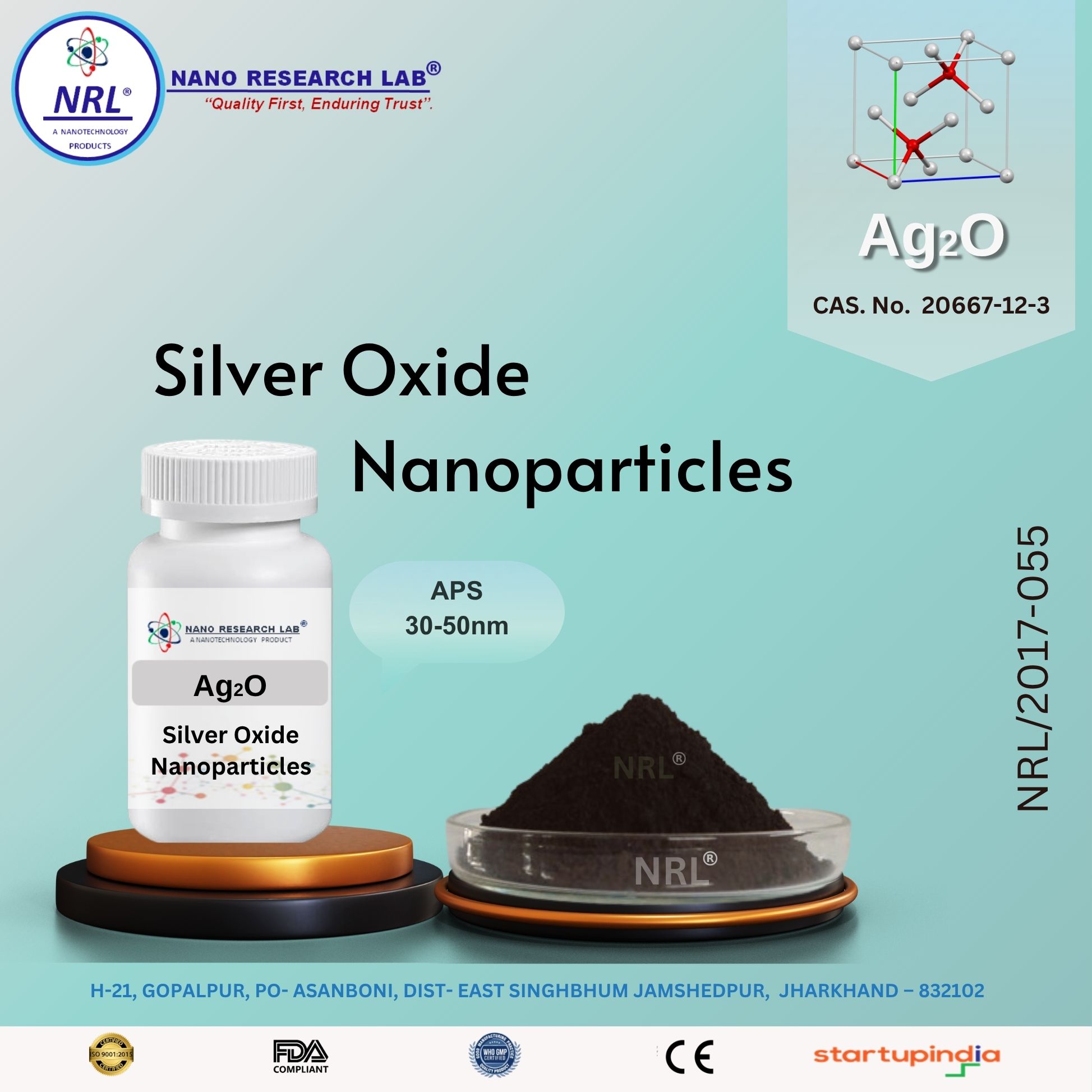
Silver Oxide Nanoparticles / Nanopowder (Ag2O, 30-50nm, Purity 99.5%)
₹4897.00
Silver Oxide Nanoparticles / Nanopowder (Ag₂O, 30–50 nm, Purity 99.5%)
⚙️ Technical Specifications
Property | Specification |
|---|---|
Product Name | Silver Oxide Nanoparticles / Nanopowder |
Chemical Formula | Ag₂O |
Purity | ≥ 99.5% |
Particle Size | 30–50 nm |
Appearance | Dark brown to black fine powder |
Crystal Structure | Cubic |
Density | 7.14 g/cm³ |
Melting Point | Decomposes at ~300°C |
Solubility | Insoluble in water, soluble in ammonia and acids |
Morphology | Spherical nanoparticles |
CAS Number | 20667-12-3 |
🌟 Key Features
High purity (≥99.5%) and uniform nano-size (30–50 nm)
Strong antimicrobial and antibacterial activity
High surface area for enhanced reactivity and catalytic performance
Excellent thermal and chemical stability under controlled conditions
Biocompatible for certain biomedical applications
Easy to disperse in solvents, polymers, and coatings
Suitable for electronics, catalysis, coatings, and medical applications
🔬 Applications (in Detail)
1. Antimicrobial & Biomedical Applications
Silver oxide nanoparticles are highly effective against bacteria, fungi, and viruses.
Used in wound dressings, coatings, and medical devices for antimicrobial protection.
Applied in drug delivery systems and antibacterial textiles.
Utilized in biosensors and diagnostic tools due to biocompatibility.
2. Catalysis
Ag₂O nanoparticles act as catalysts or catalyst supports in various organic and inorganic reactions.
Used in oxidation reactions, such as alcohol and aldehyde oxidation.
Employed in photocatalytic degradation of pollutants in water and air.
3. Electronics & Conductive Materials
Silver oxide is an essential component in battery and electronic materials.
Used in silver oxide batteries and energy storage devices.
Acts as a conductive additive in coatings, inks, and printed electronics.
4. Sensors
Silver oxide nanoparticles are used in chemical and gas sensors.
Detects gases like CO, H₂S, and NO₂ via changes in electrical conductivity.
Useful in environmental monitoring and industrial safety systems.
5. Coatings & Composites
Incorporated into polymer matrices and coatings for antimicrobial surfaces.
Enhances mechanical strength, durability, and antibacterial properties of materials.
6. Photocatalysis & Environmental Applications
Silver oxide nanoparticles serve as photocatalysts for water purification and degradation of organic dyes.
Combined with other semiconductors (e.g., TiO₂) for enhanced solar-driven photocatalysis.
